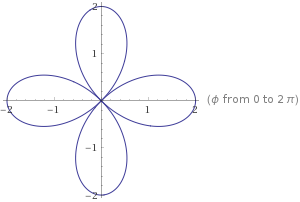Reflections
A unit circle centered at has three points on its circumference such that . Point is the reflection of about point is the reflection of about and point is the reflection of about .
As varies on and so does satisfying the above condition with fixed, point traces a path Then, what is the largest possible distance that two points on can be away from each other, i.e. what is
Notes:
- Two angle measures that are an integer multiple of apart are considered to be equal; for example, if , then .
- When two points fall onto each other, reflection about their axis becomes point reflection.
Bonus:
What can be said about the angle
The answer is 4.
This section requires Javascript.
You are seeing this because something didn't load right. We suggest you, (a) try
refreshing the page, (b) enabling javascript if it is disabled on your browser and,
finally, (c)
loading the
non-javascript version of this page
. We're sorry about the hassle.
Since all symmetrical operations were conducted around lines containing point B, we get B M = B P = B Q = B S = 1 .
Let ∠ A M B = α , then ∠ B M C = 2 α . Triangles Δ A B M and Δ B C M are isosceles meaning ∠ C B M = 2 π − α and ∠ A B M = 2 π − 2 α .
Due to symmetry ∠ C B Q = 2 π − α and ∠ A B P = 2 π − 2 α . Thus ∠ Q B P = 2 π − ∠ C B Q − ∠ C B M − ∠ A B M − ∠ A B P = 3 α and ∠ P B S = 3 α .
And finally, ∠ M B S = 2 π − ∠ P B S − ∠ Q B P − ∠ C B Q − ∠ C B M = π − 4 α . Triangle Δ M B S is also isosceles, ∠ B M S = 2 α .
That means, ∠ A M S = α and M S = 2 M B s i n ( 2 α ) = 2 M B s i n ( 2 α ) . Thus the path traced by point S is described by equation: r = 2 c o s ( 2 ϕ ) , where point M is the origin. This equation describes a rose curve with four petals, maximum distance from point M amounts 2, meaning that maximum distance between two points on the curve reaches
2
+
2
=
4
.
This equation describes a rose curve with four petals, maximum distance from point M amounts 2, meaning that maximum distance between two points on the curve reaches
2
+
2
=
4
.